All Images
News Release 05-005
New Image Sensor will Show what the Eyes See, and a Camera Cannot
Software behind the technology already finding its way into photo editing
This material is available primarily for archival purposes. Telephone numbers or other contact information may be out of date; please see current contact information at media contacts.
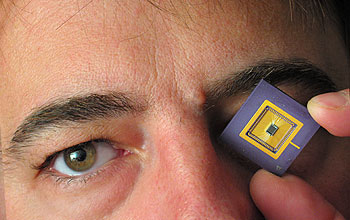
Vladimir Brajovic and his collaborators at Intrigue Technologies are developing an image sensor that will approach the adaptive capabilities of the human eye. The chip in this photo is a product of the team's related research at Carnegie Mellon. Like the proposed chip, it is a computational image sensor that pre-processes an image before sending it to a computer, video screen or other outlet.
Credit: Vladimir Brajovic, Carnegie Mellon University and Intrigue Technologies
Download the high-resolution JPG version of the image. (779 KB)
Use your mouse to right-click (Mac users may need to Ctrl-click) the link above and choose the option that will save the file or target to your computer.
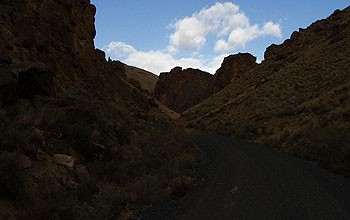
Road departure warning systems are hampered by conventional cameras. Shadow Illuminator will help the image analysis components of these systems by extracting details from shadows. This is the original, underexposed image of a desert road.
Credit: Timothy E. Nelson
Download the high-resolution JPG version of the image. (146 KB)
Use your mouse to right-click (Mac users may need to Ctrl-click) the link above and choose the option that will save the file or target to your computer.
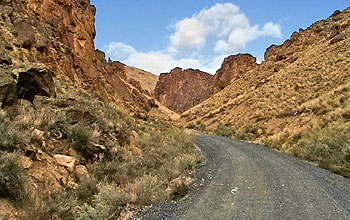
After the new software processed the image, details in the road and surrounding rock became visible.
Credit: Timothy E. Nelson
Download the high-resolution JPG version of the image. (287 KB)
Use your mouse to right-click (Mac users may need to Ctrl-click) the link above and choose the option that will save the file or target to your computer.
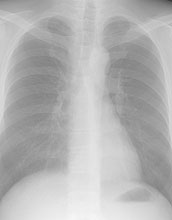
When applied to x-ray images, Shadow Illuminator enhances contrast and reveals new detail. This is the unprocessed image of a chest x-ray film.
Credit: Nikola Zivaljevic, M.D.
Download the high-resolution TIF version of the image. (204 KB)
Use your mouse to right-click (Mac users may need to Ctrl-click) the link above and choose the option that will save the file or target to your computer.
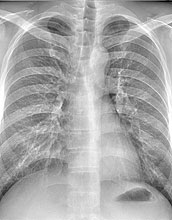
The software reveals additional detail in the x-ray.
Credit: Nikola Zivaljevic, M.D.
Download the high-resolution TIF version of the image. (207 KB)
Use your mouse to right-click (Mac users may need to Ctrl-click) the link above and choose the option that will save the file or target to your computer.

The new software may help airport security systems "see" objects in shadows. Here, a combination of dim artificial lights and natural light pouring in from windows, creates numerous obstacles for image sensors.
Credit: Vladimir Brajovic
Download the high-resolution TIF version of the image. (6.4 MB)
Use your mouse to right-click (Mac users may need to Ctrl-click) the link above and choose the option that will save the file or target to your computer.
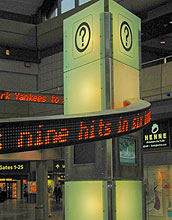
After Shadow Illuminator processing, an area once dominated by shadow now reveals the image of a man in the bottom left corner of the scene.
Credit: Vladimir Brajovic, Carnegie Mellon University and Intrigue Technology
Download the high-resolution TIF version of the image. (6.1 MB)
Use your mouse to right-click (Mac users may need to Ctrl-click) the link above and choose the option that will save the file or target to your computer.


